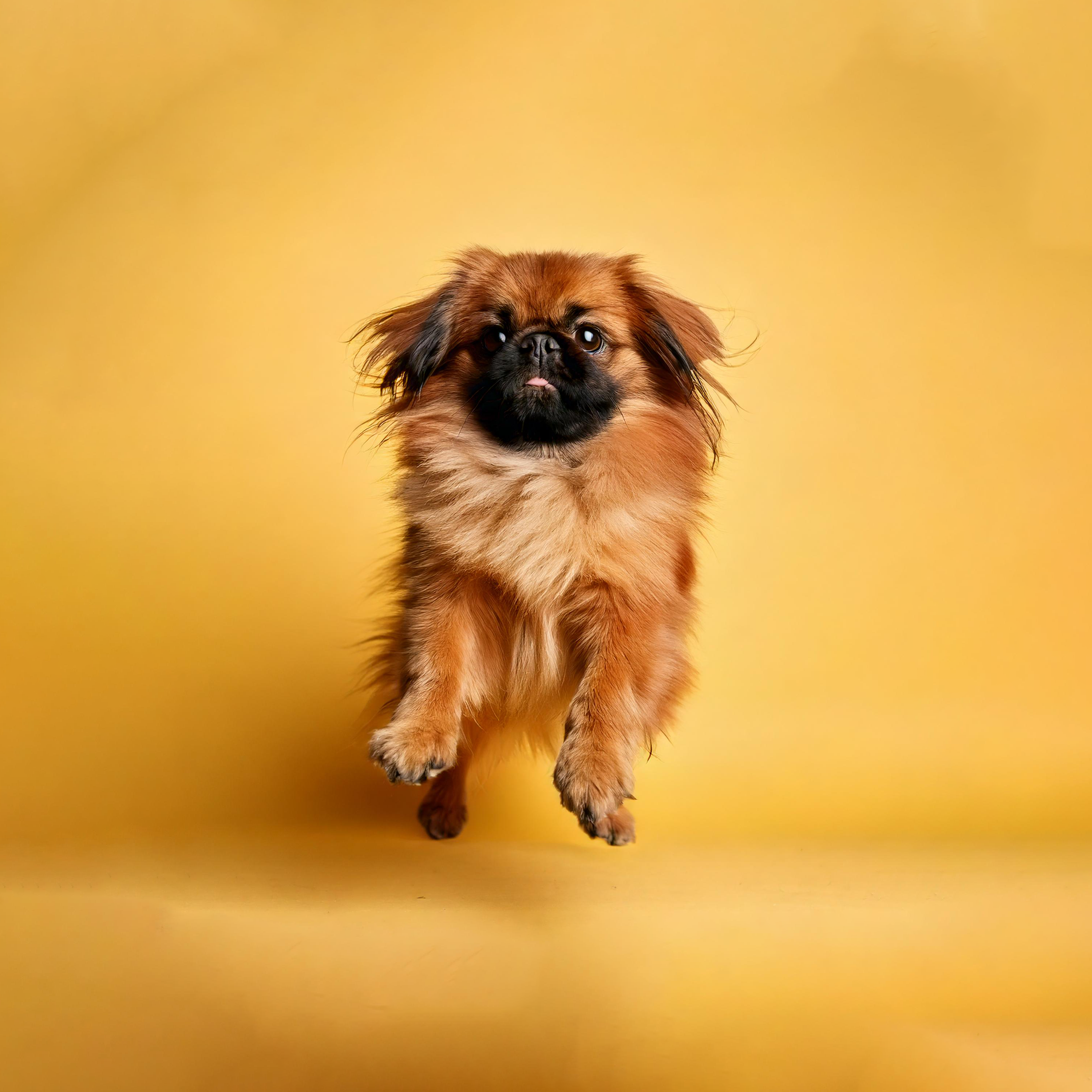Brachycephaly
Like Boxers, Bulldogs, and Pugs, the Pekingese is brachycephalic, meaning it has a short nose and narrow nostrils. That is why these important members of the family are prone to breathing problems and snoring as the temperature rises. Their breathing problem worsens with weight gain. Therefore, eating healthy food and monitoring weight are of particular importance for preventing the problem.
Due to the brachycephalic structure of the skull, it is especially dangerous to leave a Pekingese indoors for a long time. High air temperature and direct sunlight cause a large amount of mucus to accumulate in the nasal cavity of our companion animals and cause difficulty in breathing.
Skin Infection
Infection can be caused by drying of the skin, contamination of the coat, and weakening of immunity. Maintaining hygiene, ensuring a clean living environment, food rich in useful substances and a healthy lifestyle will help prevent skin infections.
Kneecap Dislocation
To avoid the discomfort caused by kneecap dislocation, it is crucial for companion animals to exercise regularly and maintain a healthy weight. A balanced intake of high-quality protein, calcium, and phosphorus will help your important family members develop muscles properly.
Corrective surgery may be necessary to fix severe cases of kneecap dislocation. However, regular veterinary check-ups will detect early signs of the problem and provide you with the opportunity to take appropriate measures at an early stage of the disease’s development.
Entropion
Entropion causes the eyelid to invert and the eyelashes to close to the surface of the eye. This may cause damage to the eyeball and the formation of an ulcer. Entropion causes tearing and flushing in animals as well as humans. To alleviate the condition, veterinarians often use artificial tears and moisturizing ointments.
Dry Eye Syndrome
Insufficient intake of water can cause dry eyes. Difficulty producing tears leads to eye irritation and vision problems. The climate is often seen as a provoking circumstance for eye problems. For instance, if you plan to spend the summer with your furry friend at the seaside, it’s advisable to take extra care and keep your companion animal out of the heat as much as possible.
Pay particular attention to early symptoms of eye disease, such as redness and tearing. It’s advisable to visit a veterinarian as soon as these symptoms appear. As a competent parent, keep in mind that daily eye care and regular cleaning of the eyes with hygiene products specially designed for dogs are essential for the prevention of diseases.

